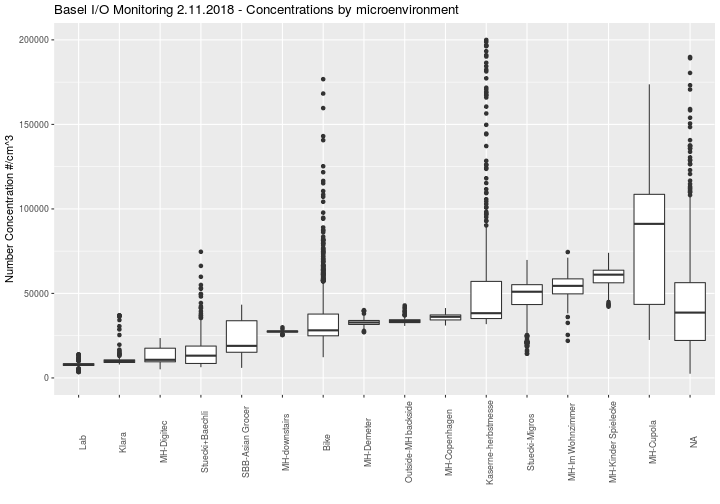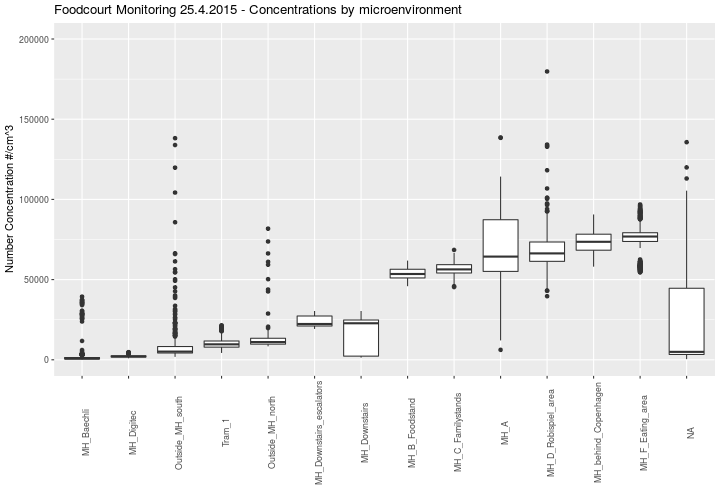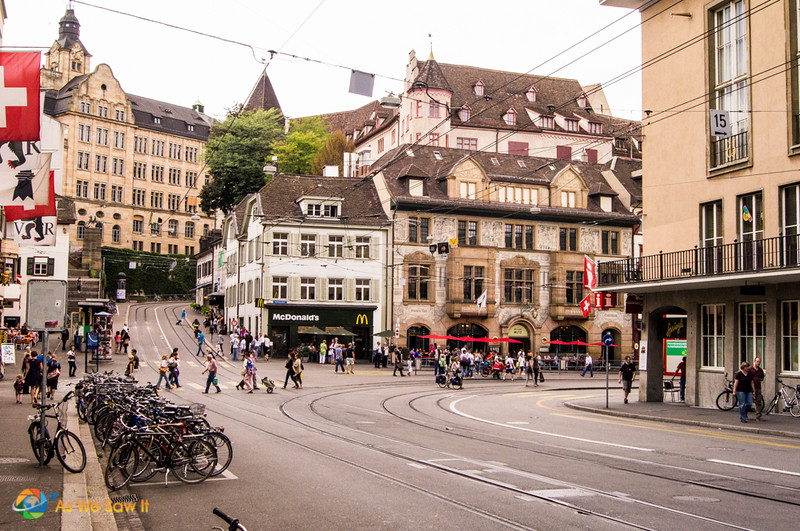Basel – Air Quality of Public Spaces
Adhoc measurements of nanoparticles 2015 & 2018
There is arguably little awareness of the variability of air quality within the public spaces that we frequent on a daily/weekly basis. Most urban residents simply have an idea of their city having either good or bad air quality. Beyond that, unless they are among the sensitive subpopulations with asthma or other respiratory ailments, there is little further reflection on the topic.
In this presentation of two days of adhoc measurements in the city of basel 3.5 years apart, we show the significant variability of air quality in indoor and outdoor public spaces. The sources are numerous and include certainly vehicular, cooking, and smoking emissions. The measurements are of nanoparticles using the MiniDisc device developed at the FHNW by M. Fierz. Nanoparticles as measured by this device range in size from about 15-300nm. These are particles that are primarily of combustion sources and not from mechanical abrasion.

Keeping in mind that typical non-smoking home indoor levels are usually around 5,000 particles per cubic centimeter, one can easily observe levels that are on average 10x higher with peaks over the 100,000 particle count. Particularly high levels are observed in indoor microenvironments where cooking is present. These types of microenvironments can lead to very high exposures–certainly for the staff–but also for customers; and, unfortunately, these spaces are numerous and difficult to regulate. It is important to note that there are currently no standards for the nanoparticles measured but as this range of particles enters easily into the deeper regions of the lung, they are an area of intense ongoing public health research.

If you are interested in such results, please feel free to leave a comment or contact us via email.
